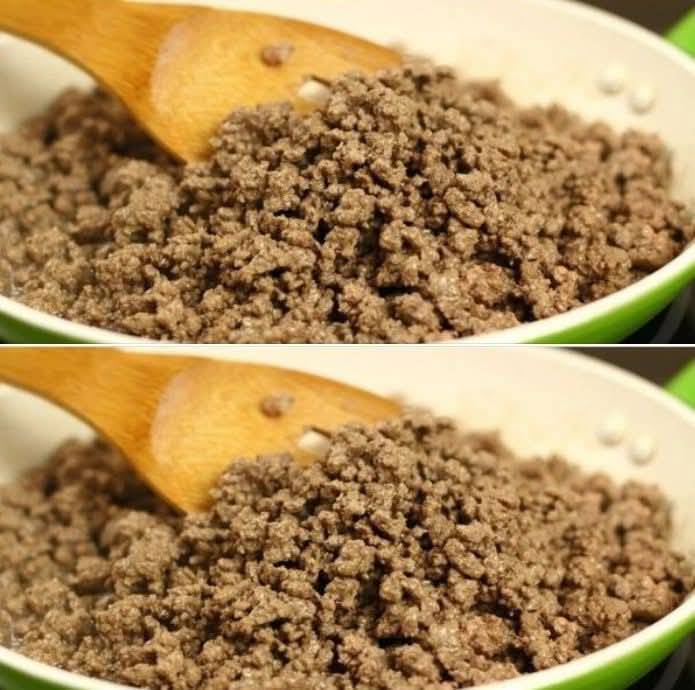ADVERTISEMENT
3. Uneven Cooking
Ground beef should be browned properly to achieve a desirable texture. Rinsing it after cooking can make the meat less uniform, and it may impact how it behaves in your recipe. Without fat to help bind the meat together, rinsed beef can sometimes become crumbly or dry. This is especially problematic when you’re making dishes where the texture of the beef is a critical component, such as meatloaf or tacos.
4. Risk of Bacteria Spreading
Rinsing raw meat is not recommended by the USDA or the FDA. While rinsing ground beef may seem like a good way to clean it, it can actually increase the risk of cross-contamination in your kitchen. Water splashing around your sink can carry bacteria from the meat onto countertops, utensils, and other foods. Ground beef is already cooked to a safe temperature during the browning process, so there’s no need to rinse it for cleanliness.
Alternatives to Rinsing Ground Beef
If your goal is to reduce the fat content without sacrificing flavor, there are other methods you can try:
1. Use Lean Ground Beef
One of the easiest ways to reduce fat is by opting for leaner cuts of ground beef. Ground turkey, chicken, or lean beef (such as 90/10 or 93/7) can give you a lower-fat alternative that doesn’t require rinsing. You still get the flavor and nutrients without the extra grease.
2. Drain Excess Fat
Instead of rinsing, simply cook the beef thoroughly, and once it’s browned, drain the excess fat. You can do this by tilting the pan and spooning out the fat, or by using a fine-mesh strainer. This method allows you to control how much fat you remove and preserves the flavor and texture of the meat.
3. Pat Dry with Paper Towels
After browning your ground beef, another trick is to blot the meat with a few paper towels. This can absorb some of the fat and grease without compromising the flavor or nutrients. This method is especially useful for recipes like tacos or chili, where you might want to cut down on the fat without affecting the overall taste.
4. Choose a Cooking Technique that Reduces Fat
Cooking methods such as baking or grilling can help fat drip off as the meat cooks, resulting in a leaner product. In these cases, you can skip the rinsing altogether and still achieve a more fat-conscious result.
When Rinsing Might Be Justified
While rinsing ground beef is typically not recommended, there are a few situations where it might make sense:
1. Making Meat for Certain Dishes
If you’re using ground beef in a recipe where the texture is less important, such as a casserole, or you’re mixing it with other ingredients that will absorb any additional grease (like in a pasta dish), rinsing the beef may not negatively affect the dish too much. However, it’s still important to remember that you’re losing flavor and nutrients in the process.
2. If You’re Dealing with Excessively Greasy Beef
If you’re working with an especially fatty cut of beef (such as fatty ground chuck) and you find that the fat content is too overwhelming for your dish, you might consider draining and rinsing to make the dish more palatable. Just be aware of the trade-off in flavor and texture.
The Bottom Line: Skip the Rinsing
In most cases, rinsing ground beef is unnecessary and can even be counterproductive. It removes much of the flavor-enhancing fat and could lead to a dry, less flavorful dish. Instead of rinsing, try using leaner cuts of meat or draining the fat after browning to achieve the same desired effect. Remember, fat is a crucial part of cooking, and many recipes benefit from it!
If your goal is to reduce fat, it’s better to use leaner meat, cook it properly, and drain the excess fat. When it comes to cooking ground beef, the key is to balance health with flavor—and rinsing is generally not the best way to do that.
So, next time you’re in the kitchen, feel free to skip the rinse and savor the rich flavors that ground beef has to offer!
ADVERTISEMENT
ADVERTISEMENT
